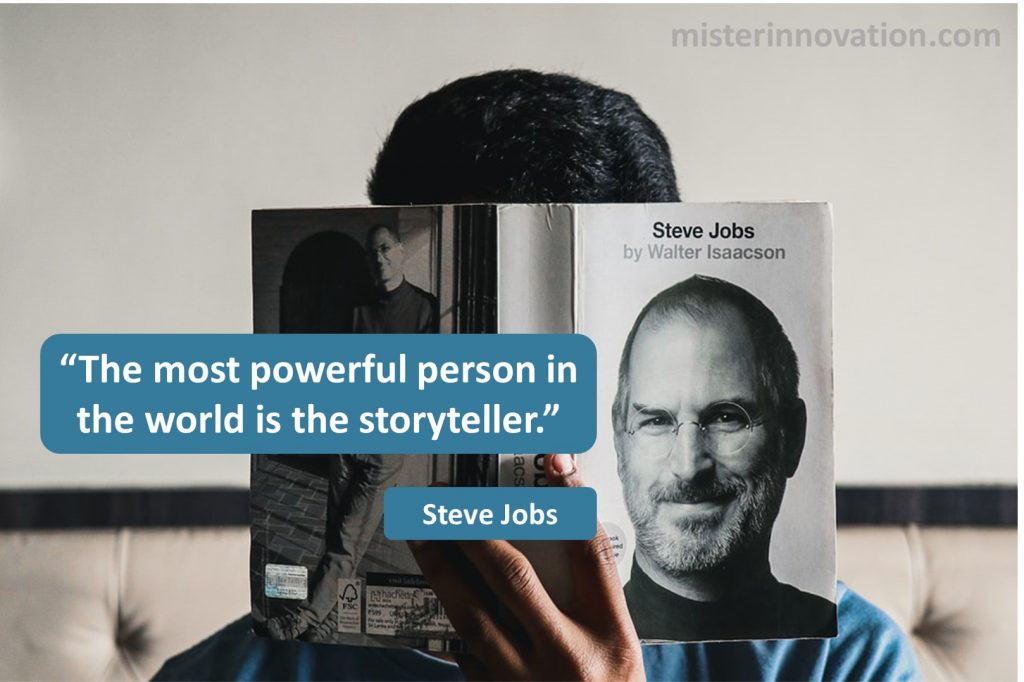
GUEST POST from Chateau G Pato
Change is an inevitability in organizations, and its successful implementation often relies on effective communication and engagement. In this context, storytelling emerges as a powerful tool that captures people’s attention, fosters understanding, and ultimately drives change initiatives forward. As Braden Kelley aptly states, “Stories help us understand complex ideas and remember key information in an engaging and emotive way.” By weaving narratives into change management efforts, organizations can inspire, unite, and galvanize their workforce to embrace transformation. Let us explore two compelling case studies that exemplify the power of storytelling in driving successful change initiatives.
Case Study 1: Disney’s “Casting Call” Transformation
In the early 2000s, The Walt Disney Company faced challenging times due to declining attendance and customer satisfaction. To address these concerns, CEO Robert Iger introduced a change initiative known as “Casting Call.” Iger believed that by actively involving employees in the change effort and sharing inspiring stories, the company could drive a cultural shift towards exceptional guest experiences.
The company leveraged storytelling by creating a daily internal newsletter, “The E-Ticket,” which featured stories showcasing exemplary employee behaviors. These stories celebrated actions that went above and beyond, inspiring others to do the same. They celebrated the “Disney Difference” and demonstrated how every individual played a crucial role in creating magical moments for guests. By amplifying these narratives throughout the organization, Disney stimulated a sense of pride, empowerment, and a shared commitment to delivering outstanding customer experiences. As a result, Disney’s “Casting Call” not only reversed the decline but also established a solid foundation for the company’s future success.
Case Study 2: Patagonia’s Sustainable Revolution
Patagonia, the outdoor clothing company, embarked on a change initiative to promote sustainability and combat climate change. CEO Rose Marcario recognized that to truly engage customers and employees, Patagonia needed to go beyond traditional marketing campaigns. She understood the power of storytelling in inspiring action and creating lasting change.
Patagonia launched the “Worn Wear” campaign, which encouraged customers to share stories about their well-worn Patagonia products and how they had been repaired rather than replaced. By highlighting these anecdotes on their website and through social media, Patagonia invited a global community to participate in the narrative of environmental responsibility and sustainable consumption. These stories not only strengthened the emotional connection between the brand and its customers but also inspired other organizations to follow suit. Patagonia’s storytelling approach effectively transformed the company’s mission from merely selling clothing to fostering a sustainable revolution within the outdoor industry.
Conclusion
The compelling case studies of Disney’s “Casting Call” and Patagonia’s “Worn Wear” campaign demonstrate the undeniable power of storytelling in driving change initiatives. Stories possess an innate ability to influence, educate, and inspire people towards action. By harnessing this power, organizations can successfully navigate the storms of organizational change, foster meaningful connections, and create a shared vision for a better future. As Braden Kelley succinctly puts it, “In a world of facts, numbers, and figures, stories are what cut through the clutter and create deeper meaning.” Embrace storytelling as an essential tool in the realm of change management, and unleash its transformative potential within your organization.
SPECIAL BONUS: Braden Kelley’s Problem Finding Canvas can be a super useful starting point for doing design thinking or human-centered design.
“The Problem Finding Canvas should help you investigate a handful of areas to explore, choose the one most important to you, extract all of the potential challenges and opportunities and choose one to prioritize.”
Image credit: Misterinnovation.com
![]() Sign up here to get Human-Centered Change & Innovation Weekly delivered to your inbox every week.
Sign up here to get Human-Centered Change & Innovation Weekly delivered to your inbox every week.